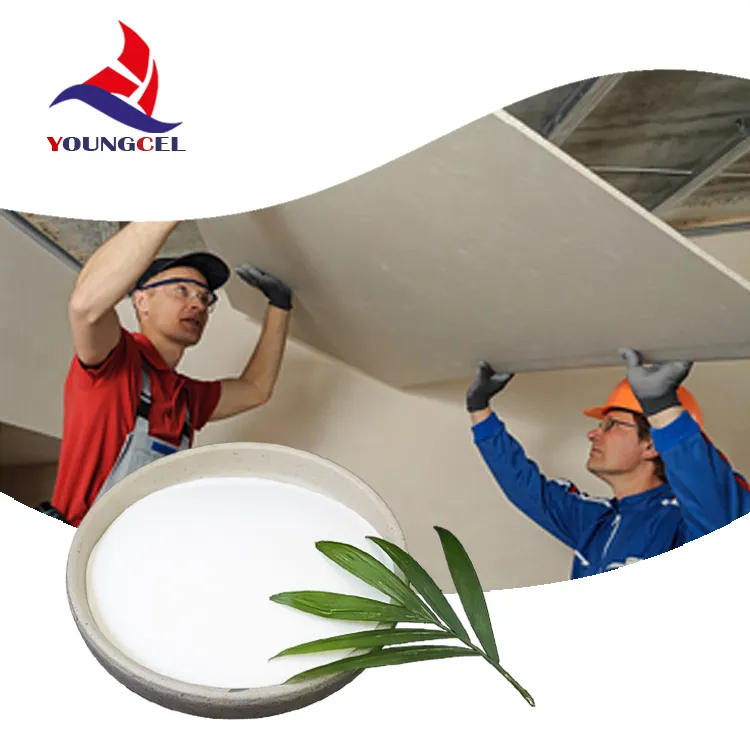The Role of Wall Putty and HPMC in Modern Construction
In the world of modern construction, the quest for quality, durability, and aesthetic appeal drives the selection of materials. Among these materials, wall putty and hydroxypropyl methyl cellulose (HPMC) have gained significant attention for their respective roles in enhancing the performance of buildings. Understanding the synergy between wall putty and HPMC is crucial for both builders and homeowners alike.
What is Wall Putty?
Wall putty is a white powder made from a combination of binders, fillers, and additives. Its primary purpose is to provide a smooth and clean surface to walls before the application of paint or other finishes. By filling in small imperfections, wall putty creates a uniform substrate that enhances the overall appearance of walls. Not only does it improve aesthetic qualities, but it also contributes to the longevity of wall finishes by preventing moisture infiltration, mold growth, and paint peeling.
The Importance of HPMC
Hydroxypropyl methyl cellulose (HPMC) is a versatile polymer widely used in various construction applications. As a water-soluble compound, it is often employed as a thickening agent, water retention agent, and film-forming agent. HPMC improves the workability of mixtures, making them easier to apply. Additionally, its water retention properties ensure that the mixture remains workable for longer periods, allowing for better adhesion and leveling.
The Synergy Between Wall Putty and HPMC
The integration of HPMC into wall putty formulations has revolutionized the application and performance of this essential construction material. By incorporating HPMC, manufacturers can enhance the properties of wall putty in several ways
wall putti hpmc

1. Improved Workability HPMC increases the viscosity of wall putty mixtures, providing a smoother texture that is easier to spread and apply. This enhancement enables applicators to achieve a more uniform finish with less effort.
2. Enhanced Water Retention One of the primary benefits of using HPMC in wall putty is its ability to retain water. This property is crucial during the curing process, as it prevents rapid drying, which can lead to cracks and uneven surfaces. Improved water retention results in better adhesion and a more durable finish.
3. Longer Open Time The addition of HPMC extends the open time of wall putty, allowing applicators to work more efficiently. This extended working period reduces the chances of premature setting, enabling them to achieve better results even in larger applications.
4. Increased Durability Wall putty blended with HPMC exhibits greater resistance to environmental factors such as moisture, temperature fluctuations, and UV exposure. This increased durability helps maintain the appearance and functionality of walls over time, reducing maintenance costs for homeowners.
5. Better Adhesion The combination of wall putty and HPMC leads to improved adhesion to various substrates, including cement, plaster, and drywall. Stronger adhesion minimizes the risk of delamination, which can be a common problem in construction projects.
Conclusion
In conclusion, the combination of wall putty and hydroxypropyl methyl cellulose (HPMC) represents a significant advancement in construction materials. Their synergy provides numerous benefits, including improved workability, water retention, open time, durability, and adhesion. By understanding the advantages of these materials, builders and homeowners can make informed decisions that lead to superior construction outcomes.
As the construction industry continues to evolve, the importance of quality materials like wall putty and HPMC cannot be overstated. These materials not only enhance the visual appeal of buildings but also contribute to their structural integrity and longevity. With the ongoing trend towards sustainable and efficient building practices, the role of wall putty and HPMC is likely to grow, ensuring that construction projects meet the demands of modern society while standing the test of time.
-
Rdp Powder: Key Considerations for Wholesalers in the Building Materials IndustryNewsJul.08,2025
-
Key Considerations for Wholesalers: Navigating the World of Hpmc - Based ProductsNewsJul.08,2025
-
Hpmc Detergent: Key Considerations for WholesalersNewsJul.08,2025
-
Key Considerations for Wholesalers: China Hpmc For Tile Adhesive, Coating Additives, Concrete Additives, and MoreNewsJul.08,2025
-
Crucial Considerations for Wholesalers: Navigating the World of Construction MaterialsNewsJul.08,2025
-
Key Considerations for Wholesalers Sourcing Additive For Cement, Additive For Concrete, Additive For Putty from Additive Manufacturer Shijiazhuang Gaocheng District Yongfeng Cellulose Co., Ltd.NewsJul.08,2025




